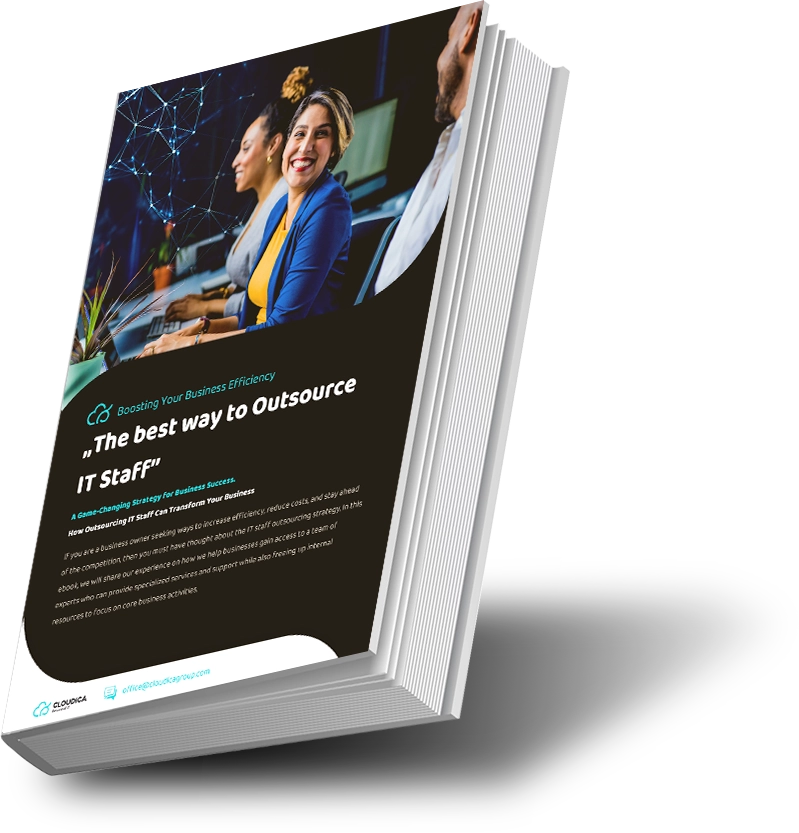In the previous article from our “Effective IT Management” series, we identified areas where IT might need a boost. Now, let’s explore the compelling advantages that stem from investing in the right technologies and IT management practices. How IT investments support productivity, communication, cost savings and improve data security and competitiveness of the business? Let’s find out.
BOOSTING PRODUCTIVITY
Investing in IT is a direct path to heightened productivity. By introducing tailored tools and information systems, companies can streamline their processes, saving both time and resources.
Consider these three essential actions to start a discussion and eventually planning process to work on productivity from IT investments perspective:
Analyze and Optimize Processes: Take a close look at existing organizational processes. Identify delays or inefficiencies and craft a plan to optimize them by removing unnecessary steps.
Automate Routine Tasks: Free up employee time and energy by implementing automation for routine tasks. Utilize tools and software to handle repetitive responsibilities, allowing employees to focus on more strategic activities.
Training and Skill Development: Invest in the skills of your IT workforce. Provide them with new tools and knowledge, enhancing their effectiveness and adaptability to evolving technologies.
Executing these steps contributes to a rapid increase in IT efficiency. However, sustaining and advancing productivity growth requires long-term planning and continuous improvement.
ENHANCING COMMUNICATION
Communication systems play a crucial role in effective communication within a company and with clients or business partners. The right tools can seamlessly facilitate information sharing, project planning, and progress monitoring.
Consider these three actions to improve communication from IT investment point of view:
Develop Communication Structure: Analyze your current communication structure. Determine main channels, responsible parties, and methods of information exchange. Use this information to develop a clearer and more effective communication structure.
Define Communication Processes: Document communication processes, specifying who, when, and how information should be conveyed. Ensure clarity for all employees, as managing the flow of information is crucial to improving communication.
Implement Communication Tools and Platforms: If not done already, introduce communication tools and platforms like Microsoft 365 to facilitate information exchange within the organization. Solutions may include project management platforms, messaging apps, online collaboration tools, and content management systems.
Executing these actions contributes to swift improvements in communication. Continuous refinement of communication processes and ongoing improvement are essential for long-term success in this area.
DRIVING COST SAVINGS
While IT investments may seem substantial, they are a pathway to long-term cost savings. Process automation, reduction of human errors, and increased efficiency can result in a significant return on investment.
Here are three actions for driving cost savings while managing IT department:
Assess and Identify Cost Waste: Conduct a thorough analysis of IT-related costs, including purchases, services, maintenance, and resource management. Identify areas of inefficiency, such as unnecessary licenses, redundant software, or suboptimal resource utilization.
Optimize Purchases and Negotiate with Suppliers: Negotiate with technology suppliers to secure favorable contract terms and price reductions. Reduce unnecessary purchase costs and manage suppliers to secure better pricing and delivery terms.
Identify and Implement Cost-Saving Solutions: Identify and implement solutions like server virtualization, process automation, and cloud migration to reduce operational costs and manage IT infrastructure more efficiently.
Completing these tasks enables quick cost savings in the IT domain. However, continuous monitoring and improvement of IT cost management processes are crucial for maintaining savings over the long term.
FOSTERING MARKET COMPETITIVENESS
Investing in advanced technologies and managing them effectively is a key differentiator from other similar offers on the market. It gives a better chance of staying competitive and gaining an edge over rivals.
How IT investments can support business goals here? Consider these three actions to foster market competitiveness:
Conduct Competitive Analysis and Examine Market Trends: Understand what other players in the IT market are doing. Identify their strengths, weaknesses, and analyze market trends to determine areas where effective competition is possible.
Develop Offering and Competitive Strategy: Based on the competitive analysis and market trends, develop a strategy to stand out in the market and provide greater value to customers. This may involve adjusting pricing, developing new services, or optimizing processes.
Swiftly Implement Changes and New Solutions: After formulating a competitive strategy, identify quick and effective actions to strengthen competitiveness. This may involve introducing new products or services, expanding marketing campaigns, building partnerships, or improving customer service.
Executing these three actions helps rapidly strengthen competitiveness in the IT market. Remember, competitiveness is a long-term process, requiring continuous improvement and market monitoring.
ENSURING DATA SECURITY
Data security is a critical aspect of any organization. Investments in secure solutions against cyber attacks and proper data backup procedures can protect a company from catastrophic losses.
Consider these three actions to ensure data security:
Conduct Risk Assessment and Identify Weak Points: Assess the risk related to data and identify weak points in current systems and security processes. Focus on areas vulnerable to leaks or data loss, such as outdated software, gaps in security policies, or unaware users.
Implement Protective Measures and Security Policies: Immediately implement protective measures, such as software updates, antivirus solutions, firewalls, and data encryption. Develop and implement security policies outlining how employees should act to protect data.
Provide Training and Increase Awareness Among Employees: Organize training and awareness programs for employees regarding cybersecurity. Provide information about threats, attack techniques, and guidelines for handling suspicious situations. Informed and responsible employees are crucial for data protection.
Completing these three actions allows for a quick improvement in data security in the IT domain. Continuous work on constant improvement and security monitoring is necessary to avoid future threats.
Let’s Ensure Your Success Lasts
Investing in effective IT management brings a multitude of benefits, including increased productivity, improved communication, cost savings, enhanced market competitiveness, and strengthened data security. While specific actions in each area yield rapid results, remember that these are ongoing processes requiring continuous refinement and adaptation to evolving technologies and business landscapes. Organizations that prioritize and invest in IT management position themselves for success in today’s dynamic and competitive business environment.


